The Ultimate Steelhead Rag Leave a reply
Fishing rags for steelhead has actually been around longer then I have been fishing. A few guys have told me they were fishing rags back in the 1960’s.
My Dad started fishing rags on the Puyallup and Carbon Rivers back in the eighty’s. I’m not sure where he saw it, or came up with it, but it was a styrofoam and yarn combination that he swore by.
At some point, backer-rod was the simple go-to method to create the rag body. One cut and you had a nice small piece of foam to pull the yarn through.
Today, and for quite some time now you can find rags tied on leaders, packaged and sold in sporting good stores pretty much everywhere. Most of the manufactured rags are white-bodied and usually have one or two colors of yarn pulled through them.
I gave up on trying to find backer-rod about ten years ago. Walking through Target one summer I stopped in the toy section and stood and stared at the big box filled with pool noodles. There were about six different colors in the box but the colors that caught my attention were the orange, pink, and chartreuse/green noodles.
I figured colored foam…how could this not work? I’ve also experimented over the years with any type of colored foam I could get my hands on. Some are tough and spongy while others are light and brittle. You won’t know if it will work until you cut a piece of foam and then try to pull yarn through it.
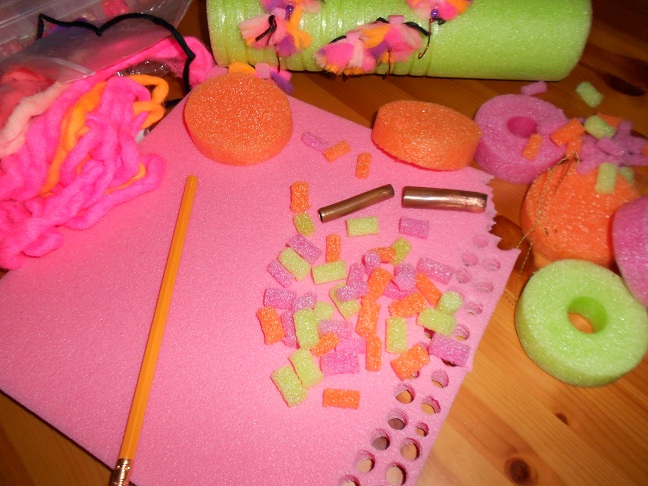 Colored rag bodies just make too much sense. Over the years, I have found that they work great for both steelhead and salmon. I pretty much rely on the pink and orange for steelies though. I use green or pink for Salmon. When I say salmon I can honestly say that I have caught, kings, coho and chums on “Rags & Eggs”.
Colored rag bodies just make too much sense. Over the years, I have found that they work great for both steelhead and salmon. I pretty much rely on the pink and orange for steelies though. I use green or pink for Salmon. When I say salmon I can honestly say that I have caught, kings, coho and chums on “Rags & Eggs”.
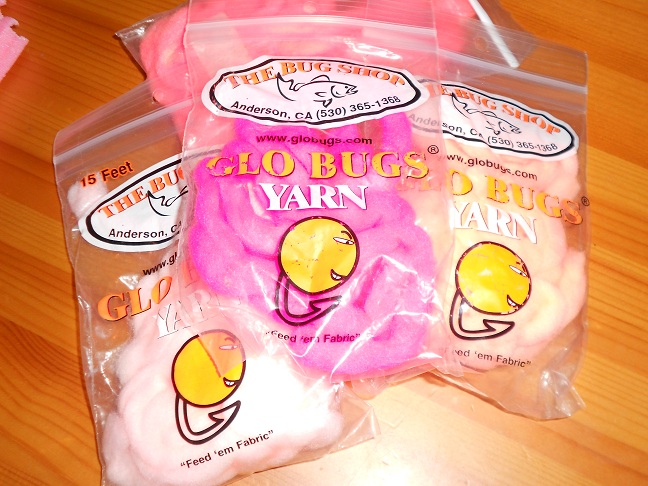 The other key component in your rag construction is the yarn. I use a lot of the Glo Bug Yarn. They have so many colors to choose from, it’s durable, and they now have a lot of colors in UV.
The other key component in your rag construction is the yarn. I use a lot of the Glo Bug Yarn. They have so many colors to choose from, it’s durable, and they now have a lot of colors in UV.
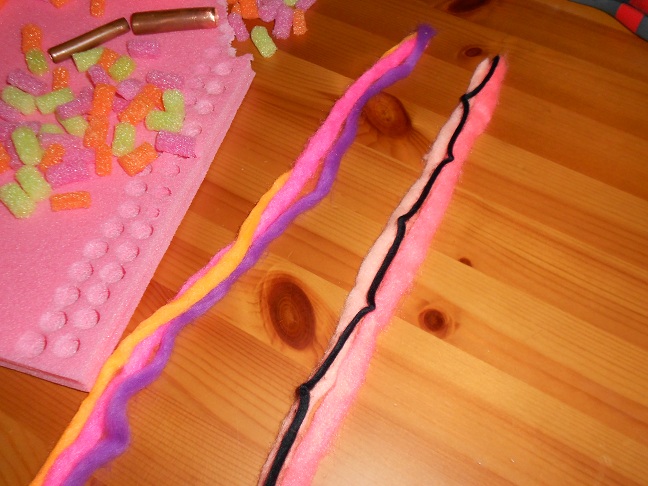 When it comes to steelhead I think color selection is key. Even though Dad, back in the day, would use white backer rod he would use anywhere from four to six different colors of yarn when he would make his rags. The key to his success was the color contrast and not much has changed in 40 years of steelheading.
When it comes to steelhead I think color selection is key. Even though Dad, back in the day, would use white backer rod he would use anywhere from four to six different colors of yarn when he would make his rags. The key to his success was the color contrast and not much has changed in 40 years of steelheading.
Steelhead are very visually stimulated. Light and dark colors in combination create contrast that they pick up on. It also grabs their attention when color combinations replicate natural food that they feed on.
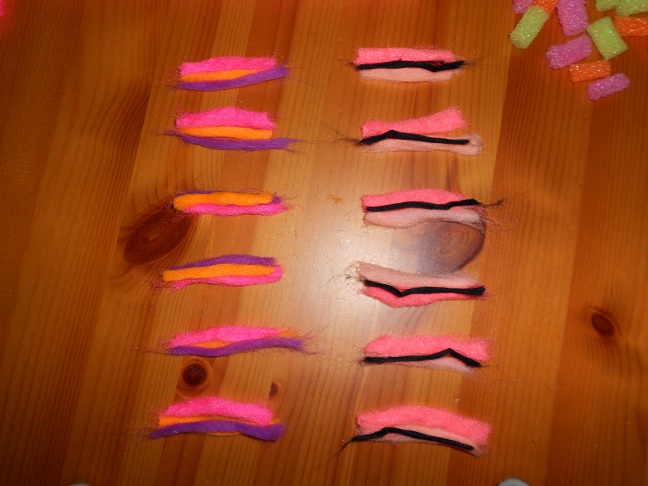 Think about the different colors in a Sand-Shrimp. Pinks, orange, purples, perhaps a little black, and the guts inside a sand shrimp are a brighter yellow color. Those are pretty much the basic go-to colors for my steelhead rags.
Think about the different colors in a Sand-Shrimp. Pinks, orange, purples, perhaps a little black, and the guts inside a sand shrimp are a brighter yellow color. Those are pretty much the basic go-to colors for my steelhead rags.
I will mix in some steelhead peach or at times a brighter pink or cerise. Usually I use a maximum of six colors with a single dark color mixed with two lighter colors in each combination. For me it’s all about the creating contrast.
Due to the large diameter of the Glo Bug yarn I will cut it to length and then separate each piece length wise to make it thinner. To try and pull a full size piece of the yarn through the foam and you’ll find that it’s just a little too thick.
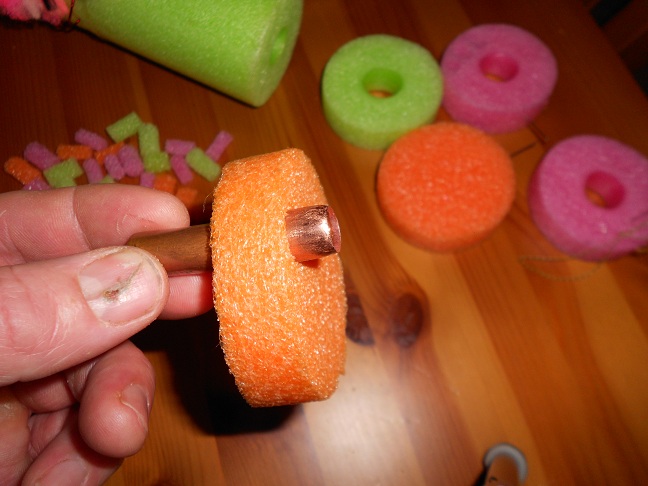 To create or punch out the rag body it’s really pretty simple. First take your pool noodle and cross cut off a disc or round. The wider you make the disk you cut off, the longer your rag body will be.
To create or punch out the rag body it’s really pretty simple. First take your pool noodle and cross cut off a disc or round. The wider you make the disk you cut off, the longer your rag body will be.
Next take a three to four inch piece of copper 3/8th in. water pipe. Take a small file and sharpen one end of the pipe, inside and out, until you get a sharp edge. When pushing the sharpened end of the tool against the foam and slightly twisting it back and forth, it will cut right through the foam. Using a pencil to push the cut plug of foam out of the tool works well.
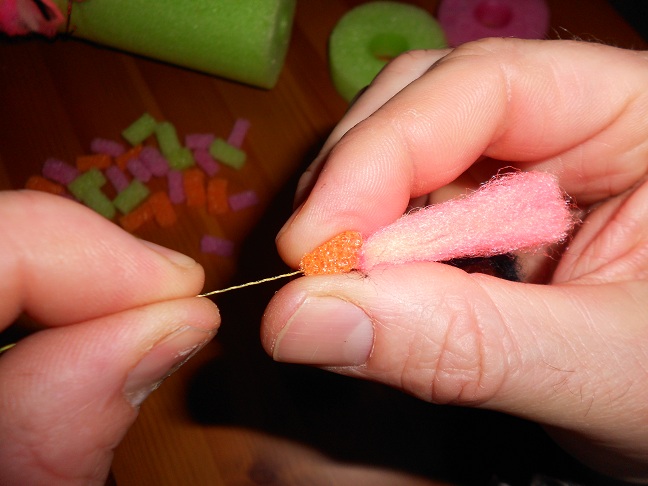 Next, grab one of your yarn color combinations and pull it through the foam. This is easy to do with a needle and a piece of braided fishing line tied in a loop. Something else that works really well for pulling yarn through the foam is a fly bobbin threader. Push the threader through the foam, place one end of the yarn pieces into the threader and pull it back through the foam.
Next, grab one of your yarn color combinations and pull it through the foam. This is easy to do with a needle and a piece of braided fishing line tied in a loop. Something else that works really well for pulling yarn through the foam is a fly bobbin threader. Push the threader through the foam, place one end of the yarn pieces into the threader and pull it back through the foam.
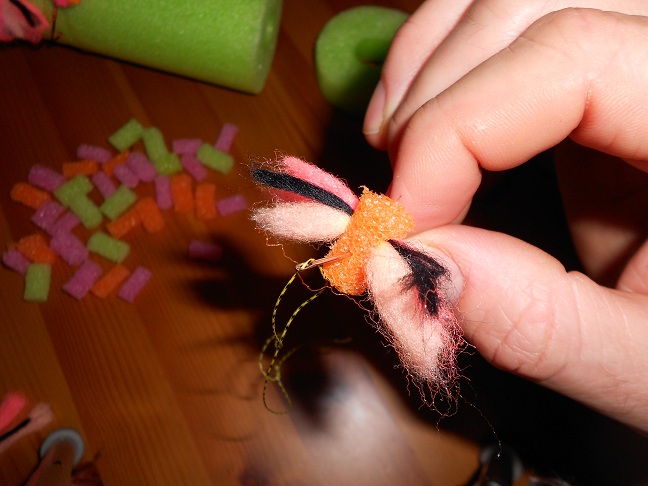 I pull the first three pieces of yarn through the foam. With the three short pieces laid together you can easily pull it through the foam as long as you grab the very end of the yarn in your loop. The more the yarn doubles back on it’s self in the loop of braid the bulkier it is and the tougher it is to pull through the foam.
I pull the first three pieces of yarn through the foam. With the three short pieces laid together you can easily pull it through the foam as long as you grab the very end of the yarn in your loop. The more the yarn doubles back on it’s self in the loop of braid the bulkier it is and the tougher it is to pull through the foam.
When I push the needle through for the second yarn grouping I place it in the foam just below the first layer of yarn. I don’t want to try to pull yarn through yarn because it won’t work.
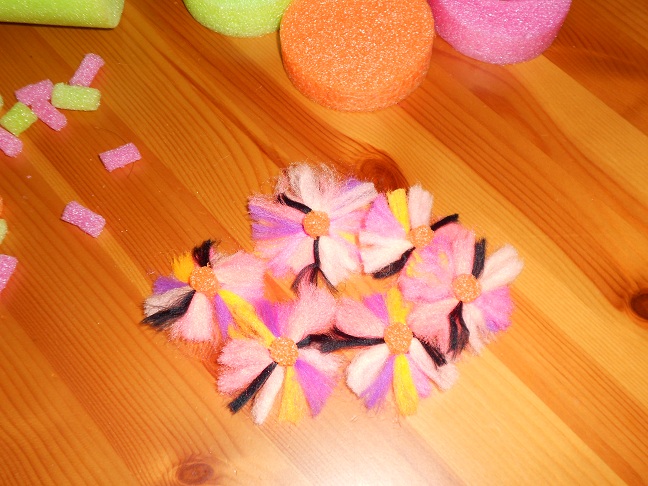 Once I have both sets of yarn pulled through I’ll pull and separate the pieces of yarn and spread them out around the body of the foam. Then I’ll cut and trim the yarn to length.
Once I have both sets of yarn pulled through I’ll pull and separate the pieces of yarn and spread them out around the body of the foam. Then I’ll cut and trim the yarn to length.
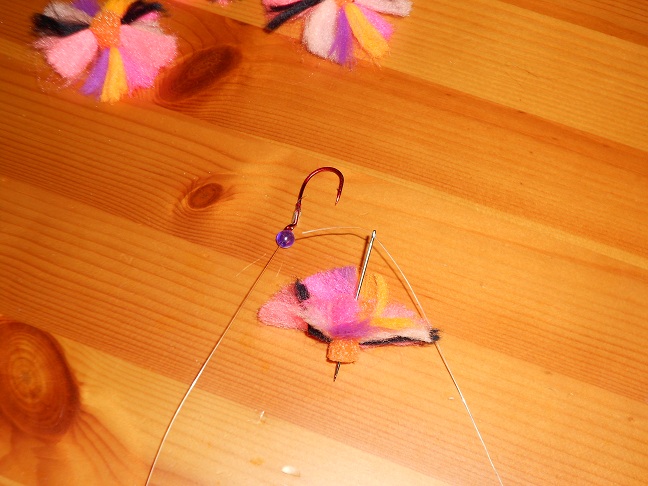 The final step is to simply tie your leader and thread the rag on to it. Push the needle through the body of the rag from bottom to top. Make sure you put a bead above your hook before threading on the rag. This helps to keep the eye of the hook from punching up into your rag. Without the bead you’ll go through a lot of rags in a day because the hook will tear up the foam.
The final step is to simply tie your leader and thread the rag on to it. Push the needle through the body of the rag from bottom to top. Make sure you put a bead above your hook before threading on the rag. This helps to keep the eye of the hook from punching up into your rag. Without the bead you’ll go through a lot of rags in a day because the hook will tear up the foam.
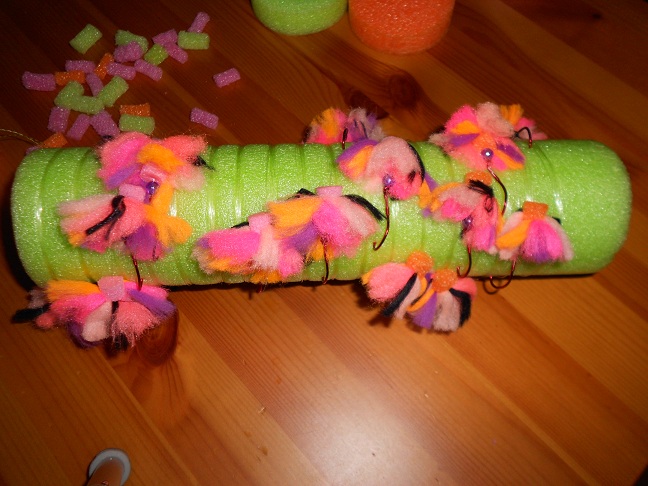 Tie yourself a leader roll full of rags and go chase some winter steelies. Eggs and rags or rags with sand-shrimp tails are both hard combinations to beat. For me, float-doggin rags with bait in steelie-green water conditions is a definite go-to…
Tie yourself a leader roll full of rags and go chase some winter steelies. Eggs and rags or rags with sand-shrimp tails are both hard combinations to beat. For me, float-doggin rags with bait in steelie-green water conditions is a definite go-to…
Duane Inglin
710 ESPN Seattle
The Outdoor Line
www.theoutdoorline.com

